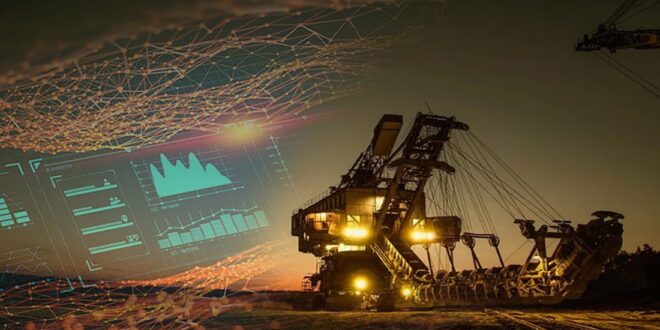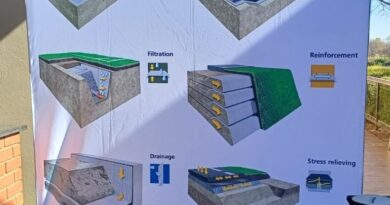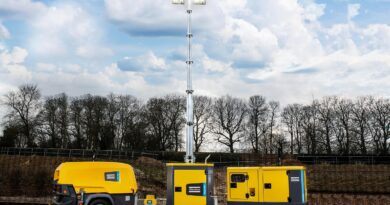Digital transformation in the South African mining industry: Part 1
Mining CEOs and their executives are being deliberate with digital transformation Since 2021, mining CEOs have focused on innovation rather than top-down initiative-based approaches to digital transformation. We’re now seeing digital and 4IR as de facto parts of mining, instead of having to prove its value through top-down initiatives.
According to this survey, 100% of respondents are on the digital journey – including leveraging technology for ESG programmes. CEOs own the strategic perspective, seeing digital and 4IR as enablers of achieving strategic and digital ambitions, and setting the pace, direction, and expectations around digital initiatives.
The CEO is the strategic steward – delivering on commitments made to shareholders and communities. They are seeking to define work in the new digital world across the mining value chain – finding, mining, treating, and trading.
Carbon neutrality, renewable mines, improved resource use, and data-driven business strategies all involve digital elements. We have seen a persistent focus on measurable value creation – mining is after all about tracking the benefits on the bottom line.
Equal participation in the digital transformation journey for all in operations came up as a strong leadership theme. This is key to getting buy-in across the enterprise. Trust in the leadership team is essential to the success and adoption of these tools. In 2023 the entire management team is involved in the digital programme. Using a 4IR lens, the executive and senior management teams focus on reducing and preventing duplication, expanding and achieving the roadmap, and embedding an environment for prediction and analysis and real time insights.
The key here is the roadmap, and realising you are on a journey. Digitalisation and 4IR are not isolated activities. Our respondents identified the roadmap as critical – you must have a vision and a plan for how to get there.
They told us that it is necessary to develop standards for connecting enterprise architectures, which relates back to the need for economies of scale to contain costs. Developing the right culture, setting up the right enabling environment, and trusting the leadership team is the key to success and adopting these tools. Transformation relies on trust as a key theme – the vision must be accepted as sound for people to adopt it.
Our previous study successfully predicted that digital would move beyond ICT or a single owner per unit, to being embedded in every business function. It’s not a specialisation so much as a vital tool to help senior leadership achieve their objectives. The specialisation lies in being able to holistically design, implement, and integrate information systems optimally – so we see the rise of the chief data officer, chief digital transformation officer, and similar roles. This is an acknowledgment that mining is modernising its workforce, engineering practices, and standards.
Some leaders indicated that mining companies are now able to drive innovation based on their vision of the future rather than original Equipment Manufacturers (OEMs) and Original Technology Manufacturers (OTMs) that historically drove innovation.
The executives are exploring and finding their own niche and nuanced portfolios for ESG and digital transformation (DX) projects – a common theme though is that these need to be fit-for-purpose. There is some experimentation, but we are not seeing a ‘see what sticks’ philosophy – in fact some executives indicated that they’ve gone so far as to revamp their business case and benefits realisation tools/systems to be far more specific and accurate.
From a global perspective, mining is lagging in the digital space compared to other industries. Mining’s digital transformation is a major priority, but miners admit that more can be done to make mining more digital.
According to the survey respondents, mining has been at the forefront of technology advances for many decades. Unlike the powerful and traditionally established Operational Technologies (OT) we use in mining and engineering, 4IR and digital technologies are an enabler of our workforce transformation and business strategy rather than operating physical processes.
We must be aware that South African conventional and shaft-based mines are typically older and closer to the end of their life cycle. Mines with shorter expected life spans of three to seven years struggle to digitise since they don’t have enough time to achieve ROI. The new mines emerging in South America are considered (by the same scale we have used) to be 75% digitised at the start – proving that digital infrastructure can be built in at a much earlier stage.
In South Africa, we are not necessarily able to digitise to that extent, but more than half of our miners ensure their organisations have digital capabilities embedded in every single project. Miners are building digital elements that provide visualisation and coordination of activities as an additional layer to all mining projects to keep an eye on business fundamentals.
A handful of miners tell us they are drawing inspiration from other industries like oil, gas and manufacturing and ‘adapt the digital technologies to mining’.
A third of respondents address this issue in a fundamentally different manner – they see digital, 4IR and innovation technologies as the critical elements of the future of mining. They are not adding digital capabilities to their projects – they are thinking through the implications of carbon neutrality, renewable mines, optimised use of resources – they are looking with fresh eyes at the mining process and asking the question, “How can I use data to drive my business forward?”. These miners are looking at data in a different way – instead of something to collect for future data mining, they are using it to design their businesses for the future.
In the previous 4IR survey, we found that digital projects driven by the technical side of the business had the greatest ROI and that is unchanged, with some elements of plant and processing approaching 85% achievement of their digital transformation goals by 2025 for multiple respondents. This follows as a 1% plant performance improvement could flow directly to bottom line results; however, we are seeing digital programmes across the value chain including supply chain and logistics – an area that mining self-declared was behind its peers in manufacturing, oil, and gas in our previous study.
Digital champions do it on purpose
Comparing the levels of digital maturity between the survey from 2020 and late 2022 we find a very different, more specific picture.
Compared to the 2020 study, it was more difficult to distinguish and categorise the four groups from each other. In most cases our respondents have programmes at various levels of maturity along their value chain – and nearly all have at least a portion of their program at a digital champion level.
Miners have led the way in technology for a century and they are not stopping now was the clear message. Variations arise from different business models (open caste as opposed to deep-level conventional) – with a lot more technologies available above ground like Long Term Evolution (LTE) as an example. Business model and data collection capabilities are also key determinants, and the complexity of integrating new technologies into legacy systems has forced miners to identify new revenue models that leverage existing infrastructure.
The road is also changing underfoot – as leaders grapple with new functions, roles, business models, data models, engineering practices and the need for new skills, new opportunities arise in the world of technology for us to adapt to. Large language models are the most recent – with Chat GPT creating a wave of unanticipated impacts around the world – so much so that its own chief technology officer (CTO) has called for its independent regulation.
Such models, when freed of their plagiaristic origins and trained in a specific context, have the potential to revolutionise our human interface once again with technologies. In this context, our respondents told us that while they may have planned a roadmap until 2025 – that is really just a chapter, and the journey continues with additional roadmaps having already been envisaged for the next five years.
Digital transformation novice (2023)
Miners have significantly shifted the goalposts for their digital programmes since 2021. Where 13% of miners in 2020/1 had no digital programme to speak of, today 100% of the miners surveyed focus on digital and see it as a critical tool for business sustainability. We are seeing a change from ‘digital only’ projects to ‘every project embeds digital’ – in other words it’s now embedded as one of the tools we use to demonstrate the value of projects. None of the miners surveyed classified themselves as new entrants to the world of digital.
Digital transformation follower (2023)
The biggest category of our previous survey, the digital followers are still a significant group due to the digital novice (2020) group moving up into this category. This accounts for 56% of respondents.
Several mining leaders have pointed out that miners are unwilling to learn lessons from other industries – in their estimation miners typically ask the question ‘Where has this been successfully rolled out in mining before?’ when confronted with new technologies, as opposed to seeking successful benchmarks in complementary industries.
We are seeing the 2020 digital novices and newer commodity businesses in the follower space – i.e., they are following the example of others and starting to understand the value of digital and 4IR but only in isolated silos – not yet across the whole business or as part of strategy. Typically starting out with point solutions, safety programmes and visualisation of the value chain, we have heard of the removal of manual spreadsheets, the use of properly integrated systems and a drive towards standardisation of software and hardware among the followers – they are typically copying successful ideas from other miners.
Digital transformation innovator (2023)
Several followers have graduated to digital innovators as we had promised in our previous survey. They have cross-functionally connected practices and, as indicated above, are embedding digital in everything they do and linking it back to existing systems. We are not rid of the point solution focus entirely – but we are seeing the rise of ecosystems and connected practices backed by a strategy that explicitly utilises digital tools to visualise work in progress, communicate to and educate employees. This group now constitutes 36% and is set to grow quickly.
One-third of respondents are well advanced in their data programmes with expectations of those platforms further transforming their business as they reach maturity between 2025 and 2027. All of these particular miners were in the follower space in our previous survey, and having achieved some success at the functional level are now thinking bigger.
Data is at the centre of this gradual transformation, i.e., we are not seeing dramatic change however they are building the data led decision-making infrastructure. They are anticipating change – but they are waiting for the maturity of their data to tell them what to change.
There has been a step change in the type of digital programmes the more advanced innovators have undertaken since our previous survey; from a point solutions focus, and using digital to create dashboards and visibility of operations in 2020 we are now seeing larger, data centric strategic programmes that take many years to come to fruition. The C-suite are focusing on enabling architectures, economies of scale and getting the best value for money out of operational and information technology systems.
Despite this investment, they are not quite digital champions as yet with these programs typically taking five to eight years to reach maturity. We do anticipate at least two more miners to reach champion status with fully integrated people, production, and cost ecosystems by 2025.
One third of respondents expect their businesses to be guided by data in the future, and some are telling us that they anticipate changing the ways of working and the ways of future mining based on this information. Though not yet complete and in the digital champions space, these innovators are set to challenge the assumptions behind mining in the coming years.
Another comparatively underdeveloped area of value according to our miners is supply chain. When we looked at the difference in the digitisation journey between manufacturing and mining in our 2020 study, supply chain and logistics stood out for all the wrong reasons – i.e., it was not a focus of very many digital programmes at all. Today this has shifted somewhat, and the members of the digital Innovators are starting to focus on it out of necessity.
Lack of alternative suppliers, ordering from silos, and the management of increased working capital are typical issues here and we expect this to become a major value driver going forward in mining.
Digital champions (2023)
South Africa has many miners that could become digital champions and several that are already digital champions in other geographies – especially South America where the new mines are built incorporating the latest thinking in digital and 4IR. But it is important to note that they may never become digital champions here in South Africa for the simple reason that the life of mine does not necessarily support the business cases. A simplistic example would be an investment into underground Wi-Fi when the mine will be closed in three to five years.
Unfortunately, that characterises a lot of our mines. The lack of investment in exploration, the lack of incentives to invest in mining in South Africa, the lack of young mines in development, the growing ESG compliance expectations and the unfortunate collapse of our energy grid come into focus here. We have only a handful of mining companies with assets that will last long enough to justify this level of investment. This doesn’t mean that they aren’t world beating-mines – just that they cannot expect the same level of investment in integrated long-term technology.
Our three digital champions in 2023 all see digital, 4IR, innovation, and technology as the critical elements of the future of mining in their companies. They are all challenging how mining can and should change throughout the value chain. Central to their thinking is carbon neutrality, the potential for renewable mines and how we can best use our limited resources and data.
That is where the data comes in. These digital champions are looking at their data in different ways, really applying effort to using their data and getting value out of it. The key to their success is intention – for each of the three they had well-defined measures of success, clear guidelines as to the business case and tracking of benefits, and a clear intent to make it of value in the future.
All three started their digital programmes in 2017/2018, and all three say they will only get the very best out of their data in 2-3 years from now.
Another thing they all have in common is that their roadmaps never stopped – they are now on the next horizon of the roadmap, they all motivate projects through business cases, and they all believe that the data we are collecting will inform the future ways of work in mining. These companies are already optimising and then iteratively reworking opportunities by redesigning and integrating – hence exploiting and leveraging ‘the new’ continuously.
THIS IS THE FIRST INSTALLMENT OF PwC’s report: The state of digital transformation in the South African mining industry – Ten insights into 4IR




